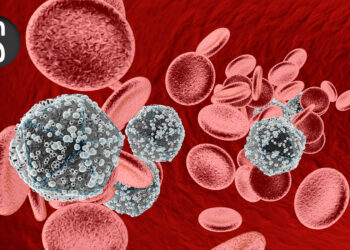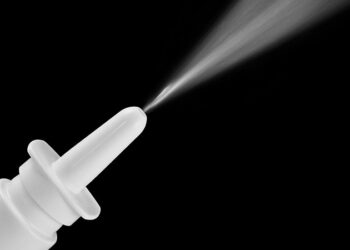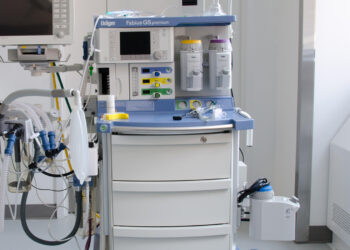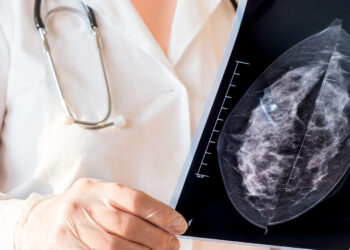The Society for Endocrinology, a UK-based organization representing a global community of scientists and clinicians working with hormones, has published updated guidelines for diagnosing and managing androgen excess in women.
The new recommendations provide a practical, evidence-based framework, emphasizing early identification and treatment tailored to the underlying etiology. Unlike some national protocols that focus primarily on polycystic ovary syndrome (PCOS) — the most common cause of hyperandrogenism — these guidelines cover a broader spectrum of causes, offering a more comprehensive clinical approach.
Early detection remains crucial, as certain effects of androgen excess — such as voice deepening, clitoromegaly, and androgenic alopecia — may be irreversible if left untreated.
The guidelines define total testosterone levels above 86 ng/dL or free testosterone levels above 3.2 ng/dL as suggestive of hyperandrogenism. They also highlighted the importance of using accurate and standardized testing methods, cautioning that both under- and overdiagnosis can result from laboratory variability.
To improve diagnostic reliability, the Society for Endocrinology recommends liquid chromatography-tandem mass spectrometry (LC-MS/MS) over immunoassays, citing its superior specificity and sensitivity, particularly at the low hormone concentrations typically observed in women.
Proper sample preparation is also critical. Recommendations include fasting for at least 8 hours, collecting blood samples in the early morning between days 3 and 5 of the menstrual cycle, and discontinuing hormonal contraceptives for 6 to 8 weeks prior to testing. Given the high variability between labs, Karen de Marca Seidel, MD, director of the Brazilian Society of Endocrinology and Metabolism, highlighted the importance of this preparation in an interview with Medscape’s Portuguese edition.
Speaking to Medscape’s Portuguese edition, Elaine Frade, PhD, head of the Department of Female Endocrinology, Andrology, and Transgender Health at the Brazilian Society of Endocrinology and Metabolism, noted that while LC-MS/MS is the gold standard, its availability is still limited in many countries, including Brazil, due to high costs and limited insurance coverage. As a result, many laboratories only offer LC-MS/MS testing after a preliminary abnormal result on conventional immunoassays.
Causes and Treatment
“The etiological investigation should be prompt and accurate, as treatment depends on the underlying cause. Symptoms can also have a significant psychosocial impact and may, in some cases, leave permanent effects,” Frade said.
Androgen excess in women may stem from a range of causes — most commonly ovarian or adrenal in origin, but also from exogenous androgen use or, more rarely, disorders of sexual development. Ovarian causes include PCOS, ovarian hyperthecosis, and androgen-secreting tumors. Adrenal causes include congenital adrenal hyperplasia and adrenal tumors.
Given its high global prevalence, PCOS should be the initial diagnostic consideration. According to the widely accepted Rotterdam criteria, diagnosis requires at least two of the following: oligo- or anovulation, clinical or biochemical signs of hyperandrogenism, and polycystic ovarian morphology on ultrasound. Frade noted that many women with PCOS also present with overweight or obesity and varying degrees of insulin resistance.
Treatment for PCOS generally involves both pharmacologic and lifestyle interventions. These may include combined oral contraceptives, weight reduction, and regular physical activity. In cases where symptoms persist, antiandrogens may be introduced. “The choice of contraceptive depends on the predominant symptoms and the patient’s individual response. A progestin can be selected based on its targeted effect,” Frade explained.
Seidel noted that in Brazil, commonly used therapeutic agents include spironolactone, metformin, and cyproterone acetate. The latter, a synthetic progestin with antiandrogenic properties, is not widely available in all countries but remains an option in selected cases.
Ovarian hyperthecosis, characterized by diffuse hyperplasia of the theca cells leading to sustained androgen production, is more frequently diagnosed in postmenopausal women. In such cases, bilateral oophorectomy is often the preferred management. For younger patients, conservative treatment using oral contraceptives and antiandrogens may be a viable option.
Androgen-secreting ovarian tumors should be considered in cases with abrupt symptom onset, rapid progression, and pronounced signs of virilization, such as increased muscle mass and voice deepening. In these patients, serum testosterone levels often exceed 5 nmol/L, and transvaginal ultrasound is warranted for further evaluation.
Among adrenal causes, nonclassic congenital adrenal hyperplasia is particularly noteworthy. Estimated to affect approximately 1% of women, this genetic condition can present with subtle symptoms and minimal virilization. A thorough family history should be taken. Screening includes measuring 17-hydroxyprogesterone during the follicular phase, with adrenocorticotropic hormone stimulation testing in ambiguous cases. Low-dose glucocorticoid therapy is typically reserved for symptomatic women seeking pregnancy or those who do not respond adequately to hormonal contraceptives.
Adrenal tumors that produce androgens usually lead to elevated dehydroepiandrosterone sulfate levels. Diagnostic workup should include imaging studies such as abdominal CT or MRI. Treatment is surgical, with mitotane or chemotherapy considered in malignant cases.
Seidel acknowledged that diagnosis is not always straightforward. “In major hospitals or referral centers, comprehensive investigations are feasible. But in the private sector, the quality of the workup often depends on the physician’s expertise and the patient’s ability to access additional testing,” she said.
When clinical findings do not align with classic etiologies of hyperandrogenism, exogenous androgen use must be considered — even if patients do not readily disclose it. According to Seidel, this may now be one of the most common, yet underrecognized, causes of androgen excess in women in Brazil. Potential sources include hormone implants containing testosterone or gestrinone, anabolic steroids used for aesthetic purposes, or off-label hormone replacement therapies during menopause.
Due to limited regulation and scarce reliable information about these products, many patients are unaware they are being exposed to androgens. Seidel noted that many present with clinical signs of androgen excess without realizing they are taking androgens.
In this context, Frade emphasized a critical point: “There is no minimum testosterone threshold below which hormone replacement is indicated in women.” She stressed that the concept of “female androgen deficiency” lacks strong scientific validation and should not be used to justify hormone supplementation.
Frade also highlighted that managing hyperandrogenism can be complex. Treatment typically requires long-term follow-up, and patients may have unrealistic expectations regarding the reversal of physical signs. “It’s essential to establish a clear and realistic treatment plan from the start. Even with effective management of the underlying cause, some clinical manifestations may be permanent or show only limited improvement,” she said.
This story was translated from Medscape’s Portuguese edition.
Source link : https://www.medscape.com/viewarticle/androgen-excess-new-guidelines-shift-focus-beyond-just-pcos-2025a1000j3o?src=rss
Author :
Publish date : 2025-07-18 11:18:00
Copyright for syndicated content belongs to the linked Source.














